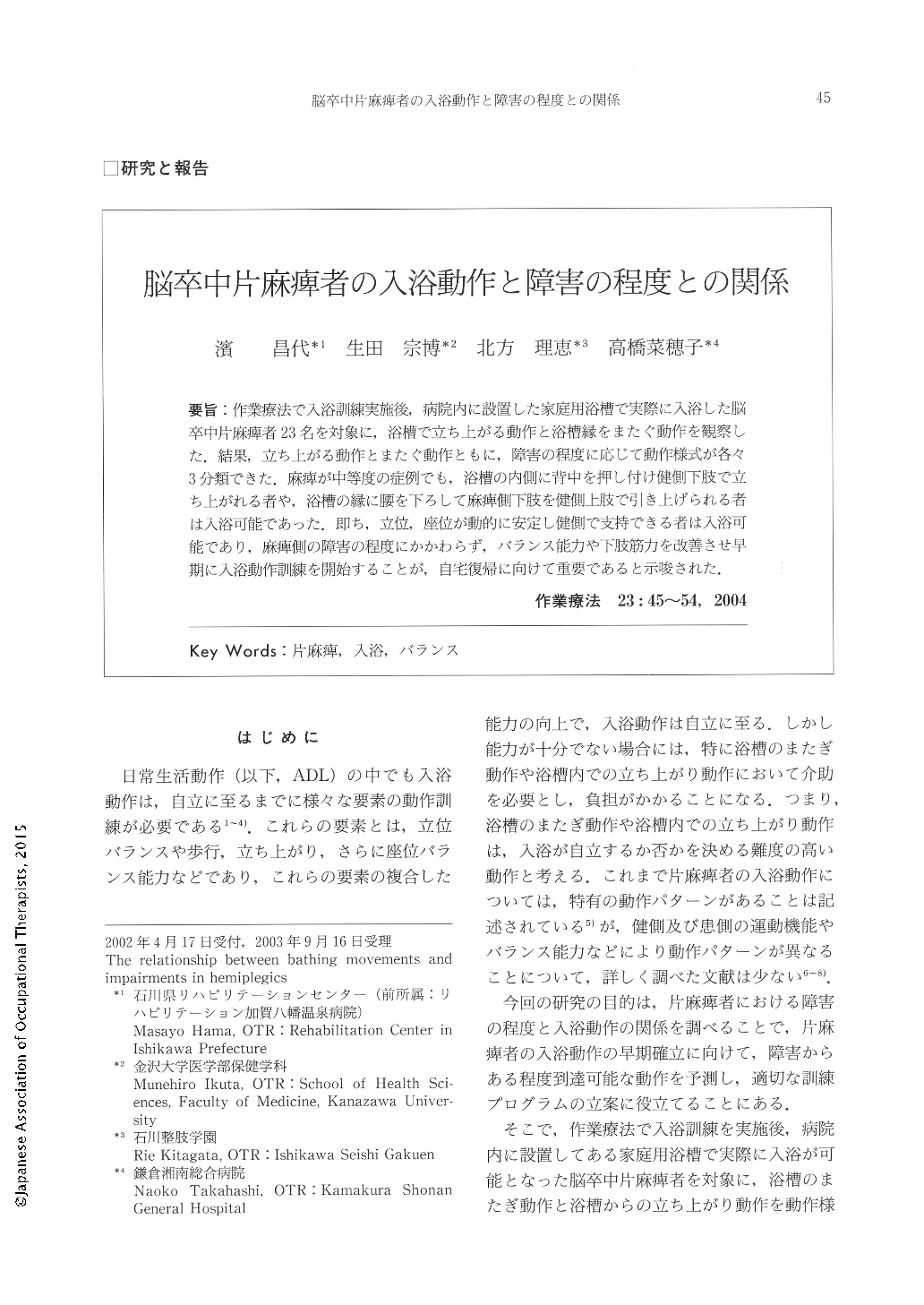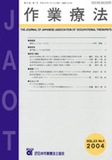Japanese
English
- 販売していません
- Abstract 文献概要
- 1ページ目 Look Inside
- 参考文献 Reference
要旨:作業療法で入浴訓練実施後,病院内に設置した家庭用浴槽で実際に入浴した脳卒中片麻痺者23名を対象に,浴槽で立ち上がる動作と浴槽縁をまたぐ動作を観察した.結果,立ち上がる動作とまたぐ動作ともに,障害の程度に応じて動作様式が各々3分類できた.麻痺が中等度の症例でも,浴槽の内側に背中を押し付け健側下肢で立ち上がれる者や,浴槽の縁に腰を下ろして麻痺側下肢を健側上肢で引き上げられる者は入浴可能であった.即ち,立位,座位が動的に安定し健側で支持できる者は入浴可能であり,麻痺側の障害の程度にかかわらず,バランス能力や下肢筋力を改善させ早期に入浴動作訓練を開始することが,自宅復帰に向けて重要であると示唆された.
Using a home-style bathtub installed in a hospital, observations were done of 23 patients with hemiplegia after cerebral vascular accident who undertook an actual training for taking a bath. Their movements when they got into the bathtub and stood up inside the tub were observed. As a result, both movements of getting into the tub and standing up inside the tub were divided into three categories based on the levels of disabilities. It was possible to take a bath even for those with middle level paralysis if they could stand up with their non-affected side of lower limb while pressing their back on the side of the tub or if they could lift their affected side of lower limb with their non-affected side of upper limb while sitting at the edge of the tub. This means that it is possible to take a bath, regardless of the level of their paralysis, for those who can move their paralyzed upper/lower limbs using their non-affected side of upper limb with a firm support using their non-affected side of lower limb and trunk while standing up and sitting. Therefore, for them to be able to take a bath by themselves at home, it is important to implement training for taking a bath at an early stage, improving muscle strength of their non-affected side of lower limb and making sure of their ability to hold balance when they support the whole body weight with their non-affected side.

Copyright © 2004, Japanese Association of Occupational Therapists. All rights reserved.


